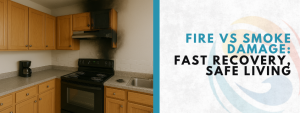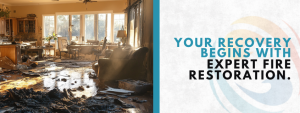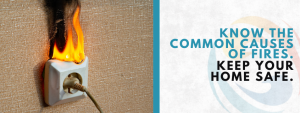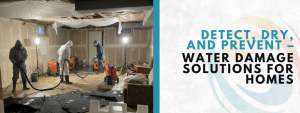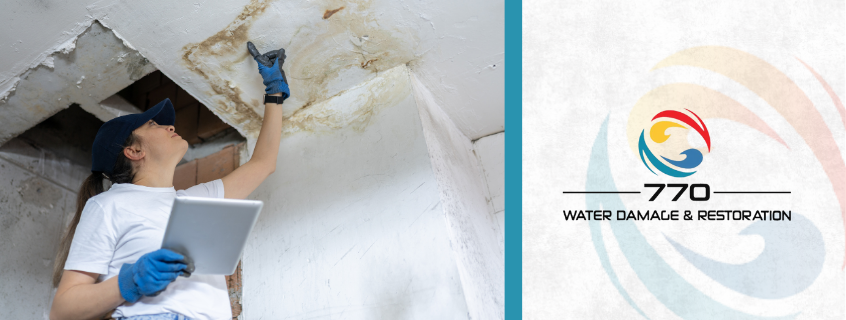
It usually starts small. You’re wiping down your kitchen or bathroom cabinet, and something just feels… off. The edge doesn’t seem as smooth as it once was. It’s a little soft, maybe even slightly raised. You run your fingers across it, thinking it’s just humidity or normal wear and tear. But if your cabinet edges feel swollen—especially if you live in a humid climate like Venice—it’s time to stop and look closer.
This small change might be trying to tell you something important. Something hidden. Something wet. And if you ignore it, it might become a serious—and expensive—problem. Let’s dive into what’s going on when your cabinet edges feel swollen and how to handle it before it gets worse.
Why Do Cabinet Edges Feel Swollen Out of Nowhere?
Imagine your cabinet like a sponge. Even though it looks strong on the outside, many cabinets are made from materials like MDF or particleboard, which soak up moisture fast. So when there’s water nearby, whether from a sink leak, a busted pipe, or high humidity, it sneaks in quietly. In places like Venice, where damp air lingers and humidity is part of daily life, that risk multiplies. One day your cabinet is fine, and the next, the edges feel swollen, soft, or even warped.
You might not even notice water at first. But over time, it seeps in slowly, spreading under the surface. Here’s what that means for your cabinet:
- The outer coating starts peeling or bubbling.
- Corners and edges lose their shape.
- Paint or veneer begins to crack or lift.
- The whole cabinet can become unstable or unsafe.
This kind of damage doesn’t just look bad—it can hide bigger problems, like mold or wood rot. That’s why it’s important to take swollen edges seriously, even if they seem small.
What’s Hiding Behind Swollen Cabinet Edges?
It might just look like a small bump, but when your cabinet edges feel swollen, there’s a good chance something is going on inside. Moisture opens the door to hidden trouble. Let’s pull back the curtain on what could be lurking behind those soft edges.
Common Hidden Issues:
1. Mold Growth
Moist wood is like a five-star hotel for mold. It moves in fast, especially in dark, closed-off cabinets under sinks. You won’t always see it at first, but if you notice a musty smell or feel itchy eyes or a sore throat when near the cabinet, mold might be the guest you didn’t invite.
2. Warped Boards
Moisture doesn’t just sit still. It spreads. The more it travels, the more it causes the cabinet to shift and bend. Soon, the doors won’t close right, or the shelves start sagging. That small edge swelling can mean a warped frame deep inside.
3. Bacteria and Mildew
Damp spots grow more than just mold. Bacteria can build up too. While it might not always be dangerous, it creates an unhealthy environment, especially near food or dishes.
4. Structural Weakness
When cabinets absorb water and swell, they lose their strength. Fasteners loosen, screws pop out, and entire sections can start collapsing. Suddenly, it’s not just the cabinet edges feel swollen—it’s the whole setup giving way.
The Most Common Reasons Your Cabinet Edges Feel Swollen
Swollen cabinet edges don’t happen for no reason. There’s usually a hidden water source at play. And knowing where that water’s coming from can help you stop it for good. In moisture-prone places like Venice, this kind of damage is especially common. Here are the usual suspects when cabinet edges feel swollen:
| Source of Moisture | Description |
| Leaky Pipes | The number one cause of water damage under kitchen and bathroom cabinets. Even tiny drips build up over time. |
| Splash Zones | Wet hands, dishwashing, and sink splashes cause repeat exposure to moisture. |
| Improper Sealing | Cabinets without good sealant or caulk absorb more humidity and liquid over time. |
| Steam & Humidity | High-moisture air from showers or cooking can settle into cabinet corners. |
| Appliance Leaks | Dishwashers or refrigerators nearby may leak without warning and soak nearby cabinetry. |
How to Check If Your Swollen Cabinets Are Hiding Damage
Sometimes damage hides in plain sight. Other times, it’s like a detective game. When your cabinet edges feel swollen, use your eyes, hands, and nose to spot what’s going on behind the scenes. Here’s a step-by-step way to check your cabinet for hidden issues:
Visual Check:
- Look for soft spots, bulging areas, or discoloration.
- Check for peeling paint, warping doors, or cracked veneer.
- Open the cabinet and inspect the interior walls and base.
Feel Test:
- Gently press on edges and corners. Softness means water absorption.
- Tap with your knuckles. Hollow or different sounds can mean rot or voids.
Smell Test:
- Musty or sour odors could mean hidden mold or bacteria.
- Sniff near edges, under the sink, and behind items stored inside.
Bonus Tip:
Place a small dish towel under the base of your cabinet and leave it for a day. If it’s damp afterward, water is still active inside—even if you don’t see it.
As soon as your cabinet edges feel swollen, this inspection can help you decide if it’s just surface-level or time for deeper help.
Quick Fixes vs. Real Solutions: What To Do When Cabinet Edges Swell
When you realize your cabinet edges feel swollen, your first thought might be: “Can I fix this myself?” And sometimes, you can. But in many cases, the swelling is just a surface symptom of a deeper problem.
Minor Swelling Fixes:
- Sand & Repaint: If damage is light, sand the swollen area, let it dry fully, and repaint or reseal.
- Dry It Out: Use a fan or dehumidifier to dry the cabinet thoroughly.
- Replace Edge Banding: Sometimes, replacing the trim or banding hides the flaw.
Major Swelling Red Flags:
- The swelling spreads quickly.
- You see mold, mildew, or discoloration.
- The cabinet smells bad or feels damp inside.
- Nearby wood is also soft or bubbling.
If you spot any of those signs, it’s time to go deeper. A proper restoration from an expert in your Venice area may be needed—and fast. Moisture spreads. Damage grows. Mold multiplies.
Should You Replace or Repair Swollen Cabinets?
One of the biggest questions homeowners face when cabinet edges feel swollen is whether they can save them—or if it’s time to replace.
Consider Repairing If:
- The swelling is minor and isolated.
- The cabinet is high quality, like solid wood.
- You can fully dry and reseal the area.
- You catch the issue early.
Consider Replacing If:
- There’s mold growing or spreading.
- More than 30% of the cabinet is affected.
- The cabinet structure is no longer stable.
- You can’t find or stop the source of moisture.
In cases where long-term water damage has occurred, it’s safer to get a full inspection. Water damage can impact more than just the cabinet. Floors, drywall, and insulation might also need help.
Preventing Swollen Cabinet Edges in the Future
Once you’ve dealt with swollen edges, you’ll want to keep it from happening again. Prevention is the best protection. If your cabinet edges feel swollen now, stop the damage early and apply these prevention tips once fixed.
Top Prevention Tactics:
- Seal Every Surface: Use waterproof paint or sealants on all cabinet surfaces—especially near sinks and plumbing.
- Check for Leaks Monthly: Look under sinks, behind appliances, and around pipes regularly.
- Use Under-Cabinet Mats: These absorb moisture before it reaches the wood.
- Install Dehumidifiers in Humid Zones: Bathrooms and basements benefit from humidity control.
- Keep a Gap Between Cabinets and Wet Appliances: Don’t let cabinets touch dishwashers, washing machines, or water lines directly.
Even simple steps can go a long way in keeping your cabinets dry and safe. Especially if you live in a humid climate or have older plumbing, staying alert is key.
What If You Ignore Swollen Cabinet Edges?
It’s tempting to ignore the problem. Maybe the swelling isn’t that noticeable yet. Maybe you’re busy. Maybe you think it’s no big deal. But when your cabinet edges feel swollen, it’s a warning bell. Here’s what could happen if you ignore it:
- Mold spreads behind walls, making your air unsafe to breathe.
- Water damage extends to floors, baseboards, or other cabinets.
- Health symptoms like coughing, headaches, or allergies worsen.
- Structural damage turns a small fix into a full renovation.
Waiting doesn’t save money. It costs more. And it risks your family’s health. If the issue has gotten out of hand or you’re not sure how bad it is, don’t wait. See a professional Water Damage Restoration Venice that offers restoration services for damage caused by moisture, water, and even mold.
Final Thoughts: Don’t Shrug Off Swollen Cabinet Edges
When your cabinet edges feel swollen, it’s not just a cosmetic problem. It’s a signal. A whisper that something is wrong behind the scenes. Maybe it’s a leak. Maybe it’s mold. Maybe it’s the start of a bigger problem you can’t see yet.
But now you know what to look for. You know how to check it, what it might mean, and what to do next. Swollen cabinet edges don’t have to lead to disaster—if you catch them early and take the right steps.
So next time you run your hand across your cabinets and feel something soft or uneven, don’t ignore it. Listen. Act. Protect your home.
Frequently Asked Questions: Cabinet Edges Feel Swollen? What You Need to Know
Why do my cabinet edges feel swollen even though I don’t see any leaks?
Swollen edges often mean hidden moisture from small drips, humidity, or plumbing issues you can’t see. It’s best to inspect under and behind the cabinet to catch the source early.
Can I fix swollen cabinet edges myself, or do I need a professional?
You can repair minor swelling with sanding and sealing, but widespread damage, mold, or softness may need professional help. Always check for deeper issues before deciding.
Is mold a common problem when cabinet edges swell?
Yes, mold thrives in damp, dark cabinet spaces, especially under sinks. If you notice a musty smell or discoloration, mold may already be growing inside.
How can I prevent my cabinet edges from swelling again?
Seal edges with waterproof coatings, check for leaks monthly, and use under-sink mats or dehumidifiers. Prevention works best when done consistently after fixing the issue.
What materials are most vulnerable when cabinet edges swell?
MDF, particle board, and laminate cabinets soak up water faster and swell easily. Solid wood holds up better but can still warp with prolonged moisture exposure.


